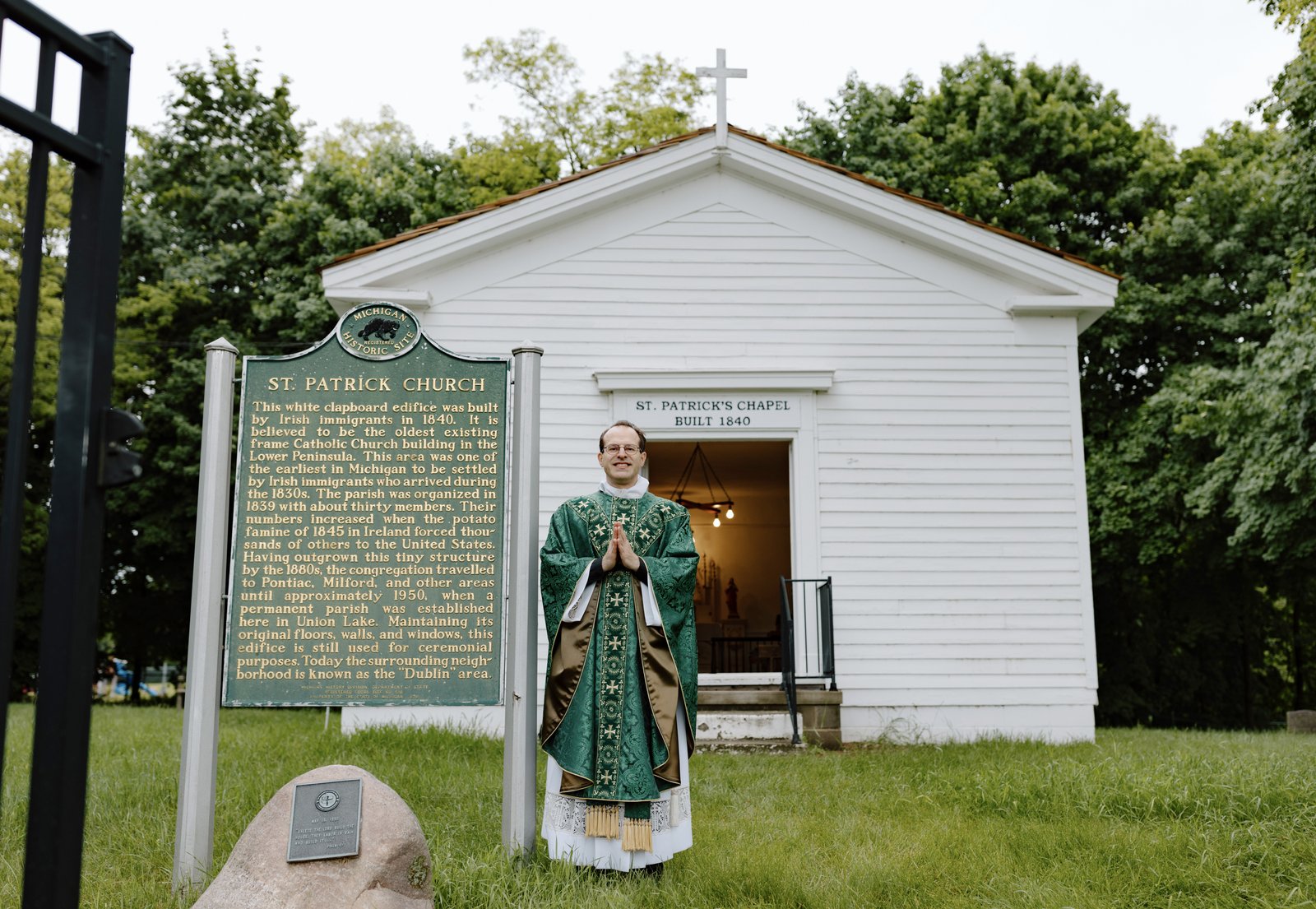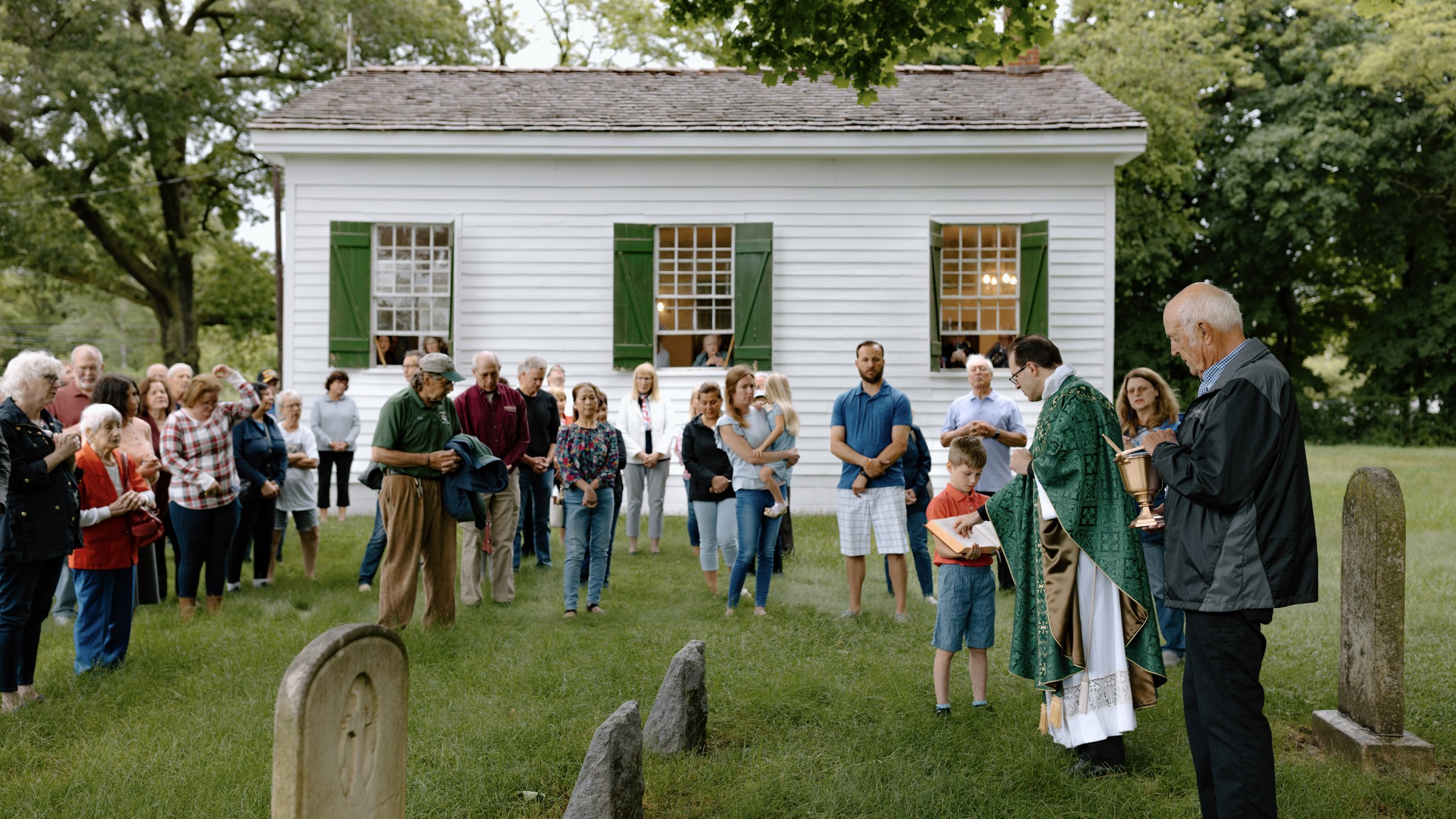Oldest Catholic edifice in Michigan's Lower Peninsula was built in 1840 to serve Irish farming community, named after St. Patrick
Editor’s note: The Catholic Services Appeal is essential to the mission of the Archdiocese of Detroit. It funds and supports more than 100 ministries that serve the local Church in southeast Michigan, including Detroit Catholic. Visit www.givecsa.org to support the mission by making a gift today. We are grateful for your generous support and for your prayers.
WHITE LAKE TOWNSHIP — Nestled amidst the trees and a cemetery on Union Lake Road in White Lake Charter Township stands a humble landmark of Catholic history in Michigan.
The simple “little white chapel,” as local refers to it, doesn’t look like much — a small structure with a chimney, wood panels for windows, and a small porch leading to two white doors. Motorists pass by every day without even noticing it.
But the St. Patrick Chapel has a proud history to it: it’s the oldest standing Catholic edifice in Michigan's Lower Peninsula, a testament to the faith — and craftsmanship — of Irish Catholic settlers who first moved into the area in 1834.
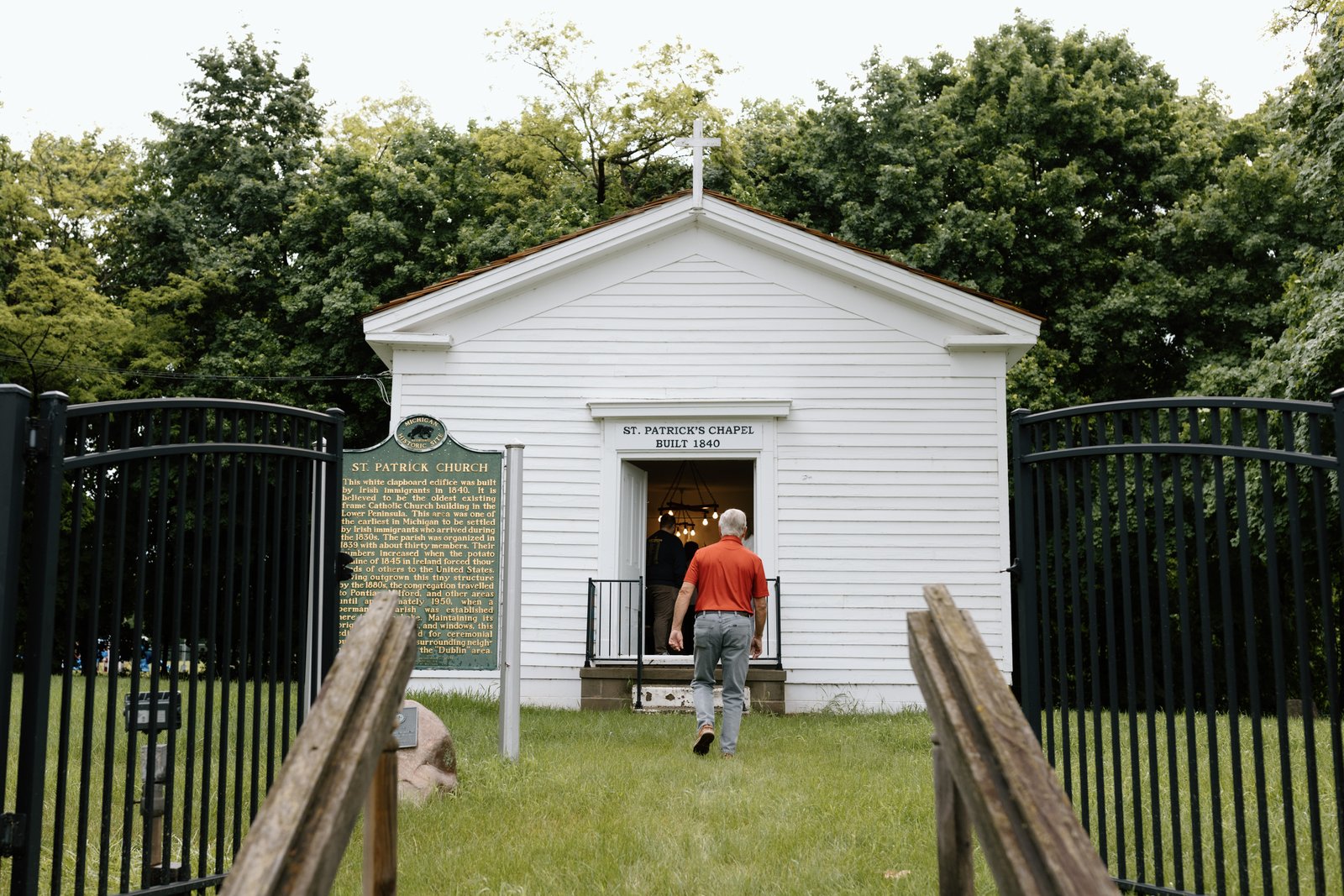
“The chapel was built in 1840 by Irish immigrants, and it is believed to be the oldest existing-frame Catholic building in the Lower Peninsula, and it’s still used every year on Memorial Day and Labor Day,” Diane Miller, former worship coordinator at St. Patrick Parish in White Lake, told Detroit Catholic.
Miller retired from parish work eight years ago, but has been a parishioner at St. Patrick for 46 and knows what the little white chapel means to the community.
“Many parishioners young and old come to these celebrations,” Miller said. “There is still the original wooden benches inside, built by the parishioners, with the sizes depending on how large the family was, so all different sizes. The whole chapel is a point of pride for the parish.”
The historic chapel predates White Lake Charter Township, when Irish immigrants settled into small farming communities in the area and needed a place to celebrate Mass.
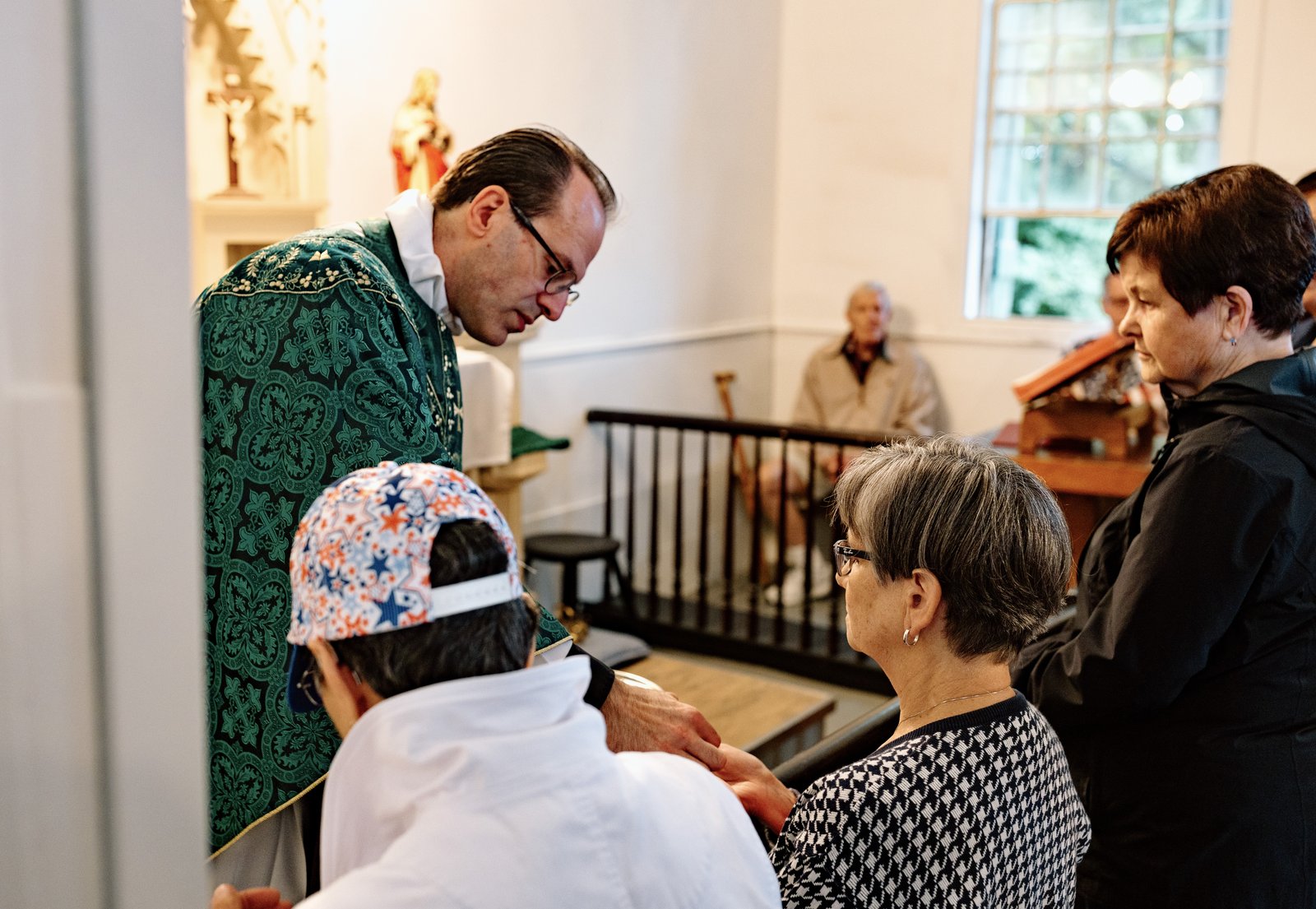

By 1870, the community grew large enough that not everyone could move into the chapel that only seats about 40 people, so families traveled to surrounding communities such as Pontiac and Milford for Mass.
The small chapel got a second life after World War I, when Detroiters would come to the White Lake area for summer vacation and use the small chapel for Mass, with priests from Pontiac celebrating.
By 1948, the St. Patrick community had grown enough to become a parish, with the chapel being its first worship site.
The chapel still looked the same as it did when it was built in 1840, albeit with the addition of electric lights and a cement block foundation that was added after World War I. But other than those upgrades, it very much was exactly how the Irish settlers built it.
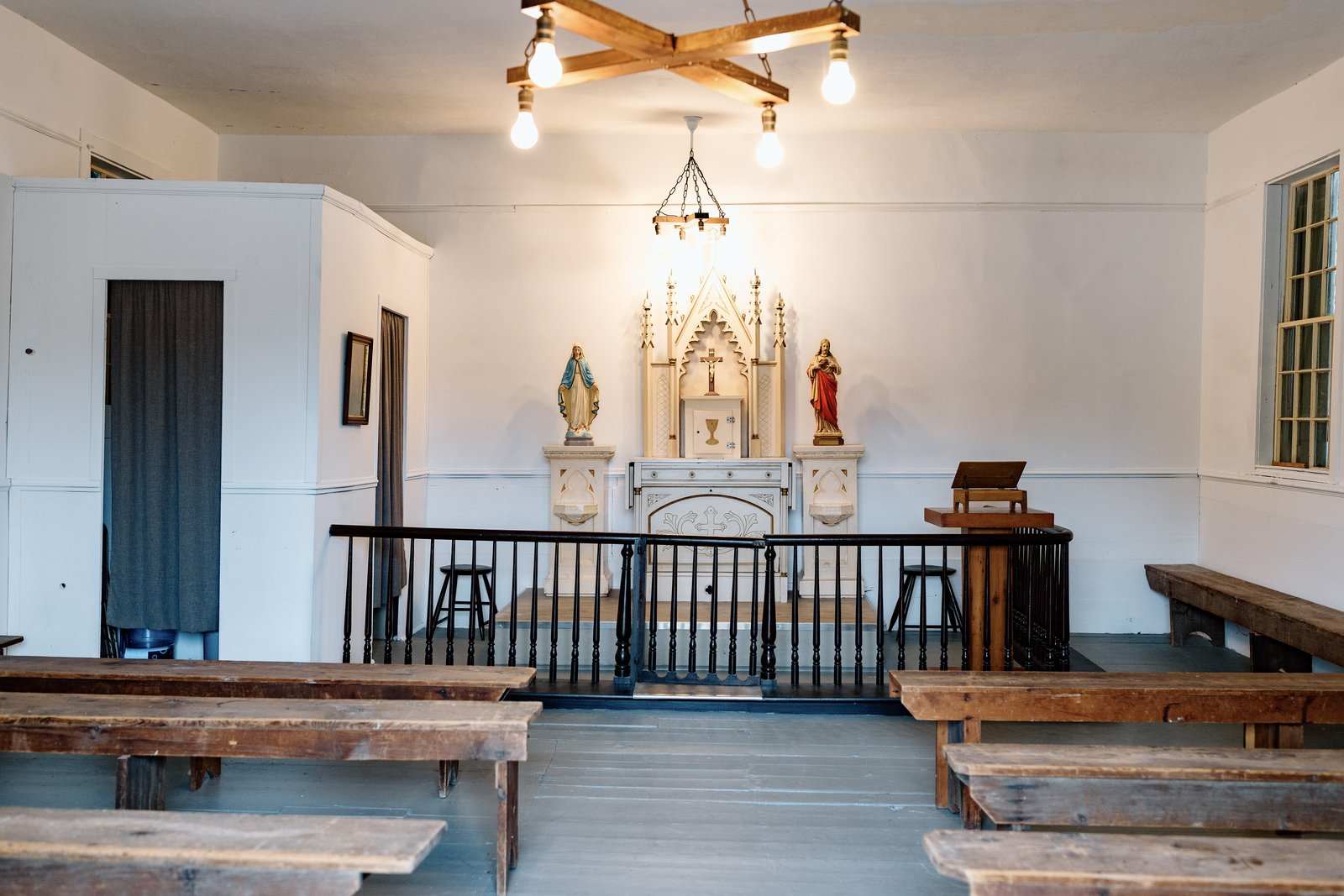
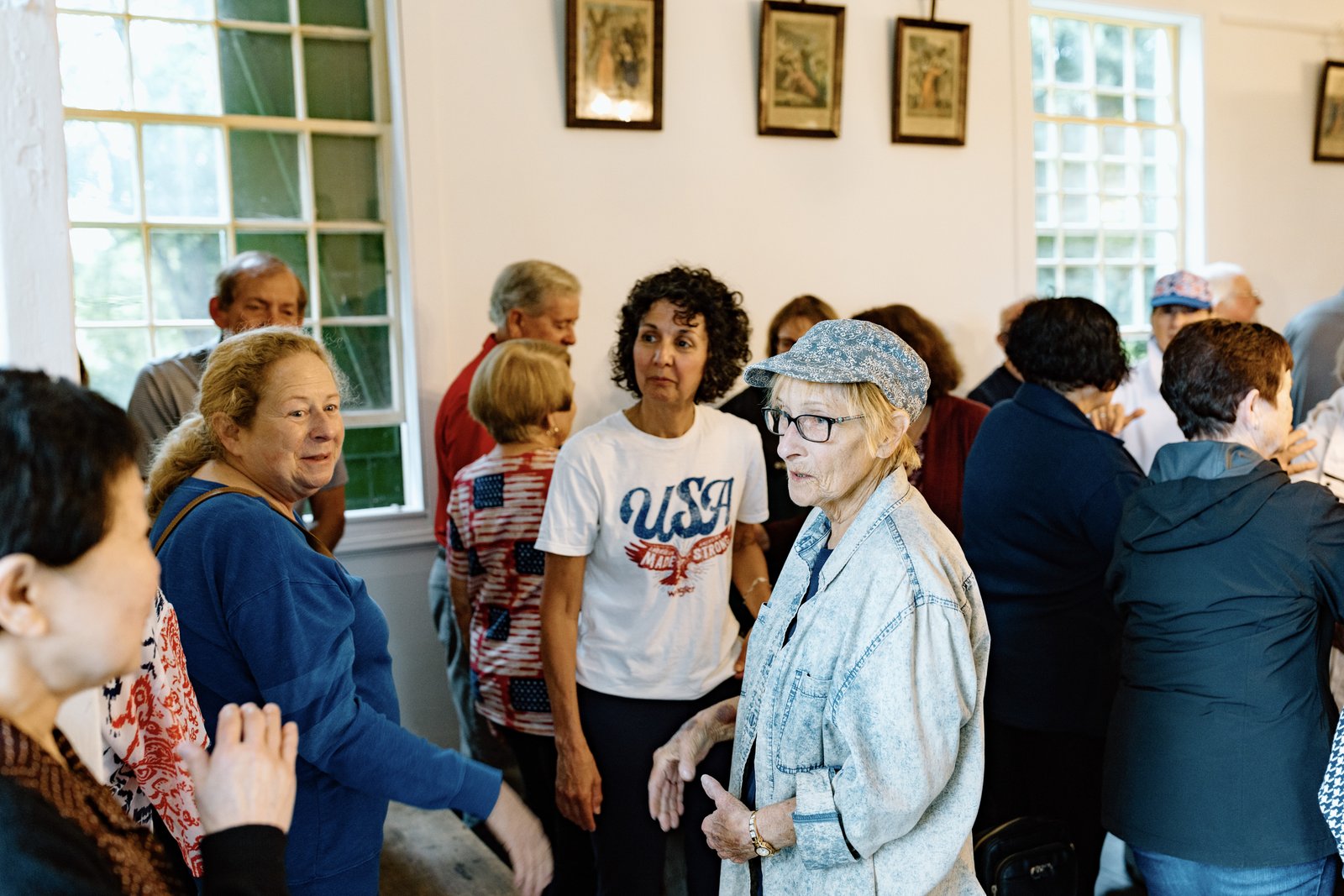
“The original baptismal font is there. There is a little section used for storage where the confessional was. It’s got the original Stations of the Cross,” Miller said. “It’s a wonderful experience to celebrate Mass there, surrounded by our parish cemetery, which has some very historic tombstones in it.”
By 1950, St. Patrick Parish required a more permanent worship site. St. Scholastica Parish in Detroit provided a solution.
St. Scholastica was building a new church, so the old church was broken into five pieces and trucked up to Hutchins and Union Lake roads in White Lake and reassembled, across the road from the little white chapel.
The reassembled church was St. Patrick’s home, with the chapel used for the 9 a.m. Memorial Day and Labor Day Masses.
On Sept. 6, 1965, ground was broken for the existing St. Patrick Church, which was dedicated by Cardinal John F. Dearden of Detroit on Dec. 13, 1966.
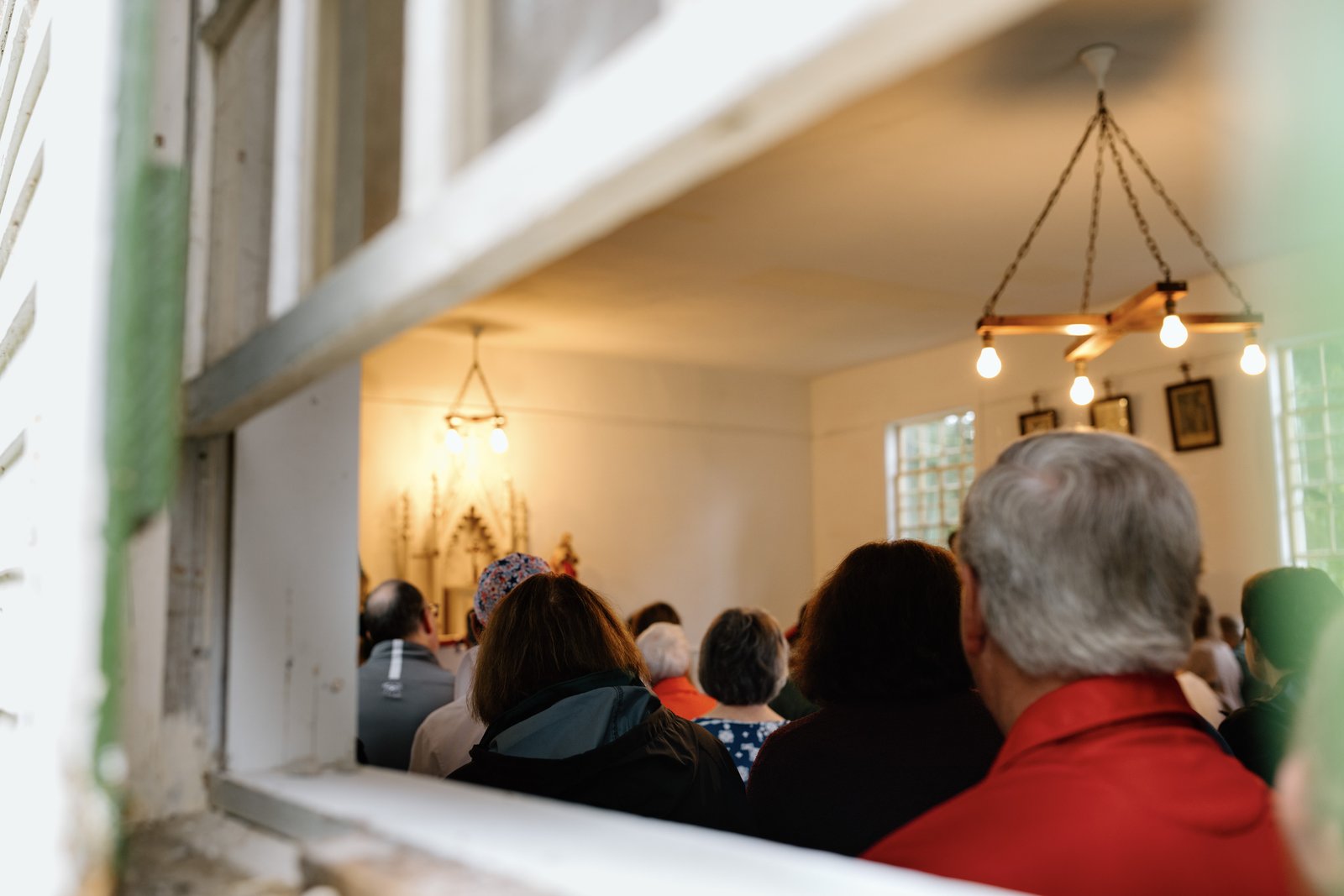
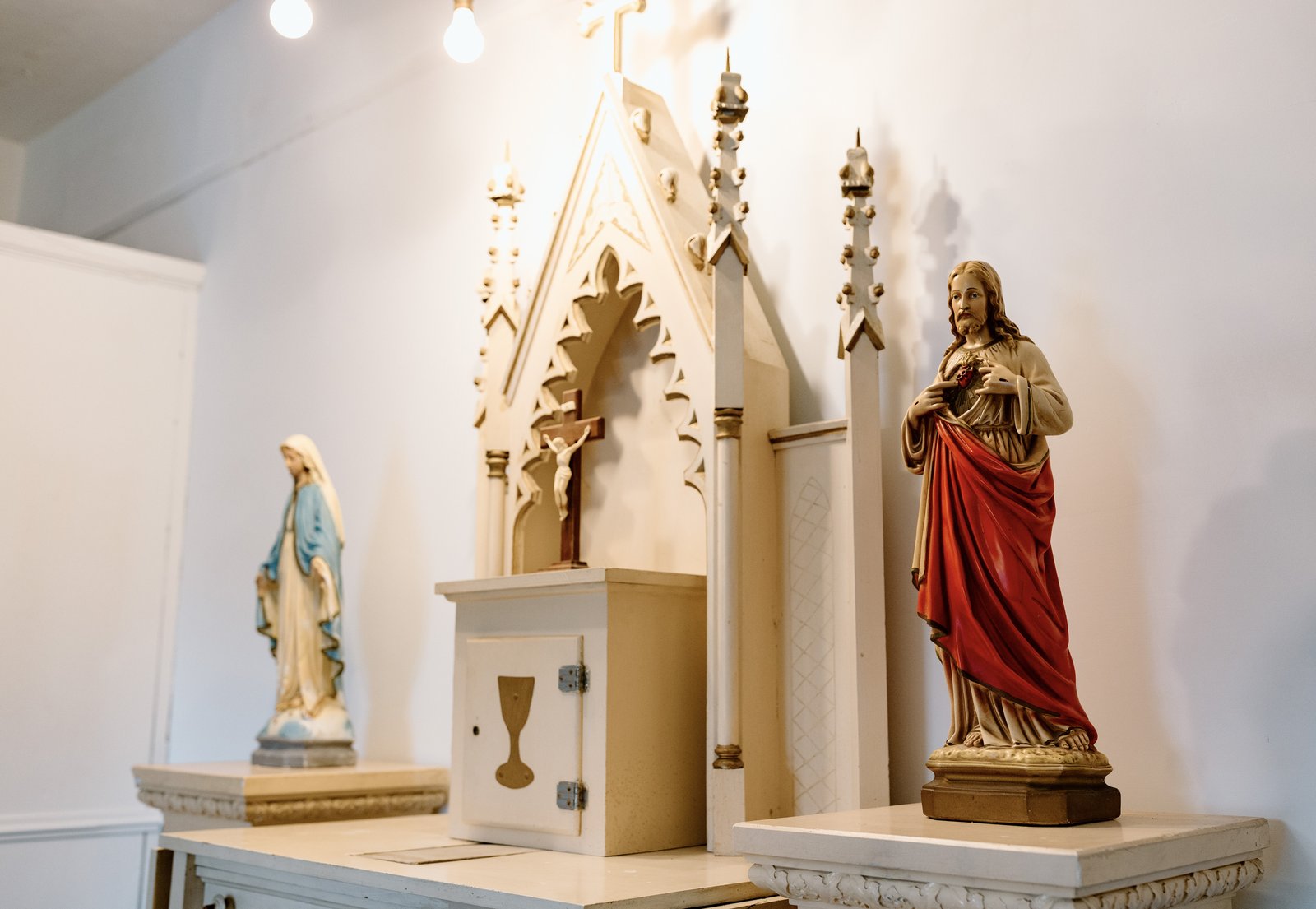
The little white chapel today serves as a remnant of the history of the area, a simpler time when people celebrated the Lord’s sacrifice in a humble edifice.
Miller said celebrating Mass twice a year in the small chapel is like stepping into a time machine. The first 40 people there pack themselves into the small chapel, with windows and doors open to allow air to circulate into the building. The rest of the congregation stands outside in the cemetery.
“There’s no air-conditioning, it just smells old when you walk in,” Miller said. “We keep it in good condition. The Knights of Columbus make sure it’s in good working condition. There are steps, wooden steps that come from the street to the property line. Mass is Mass as usual, except it’s a very small congregation inside. Sometimes many people are standing outside if the weather is not bad.”
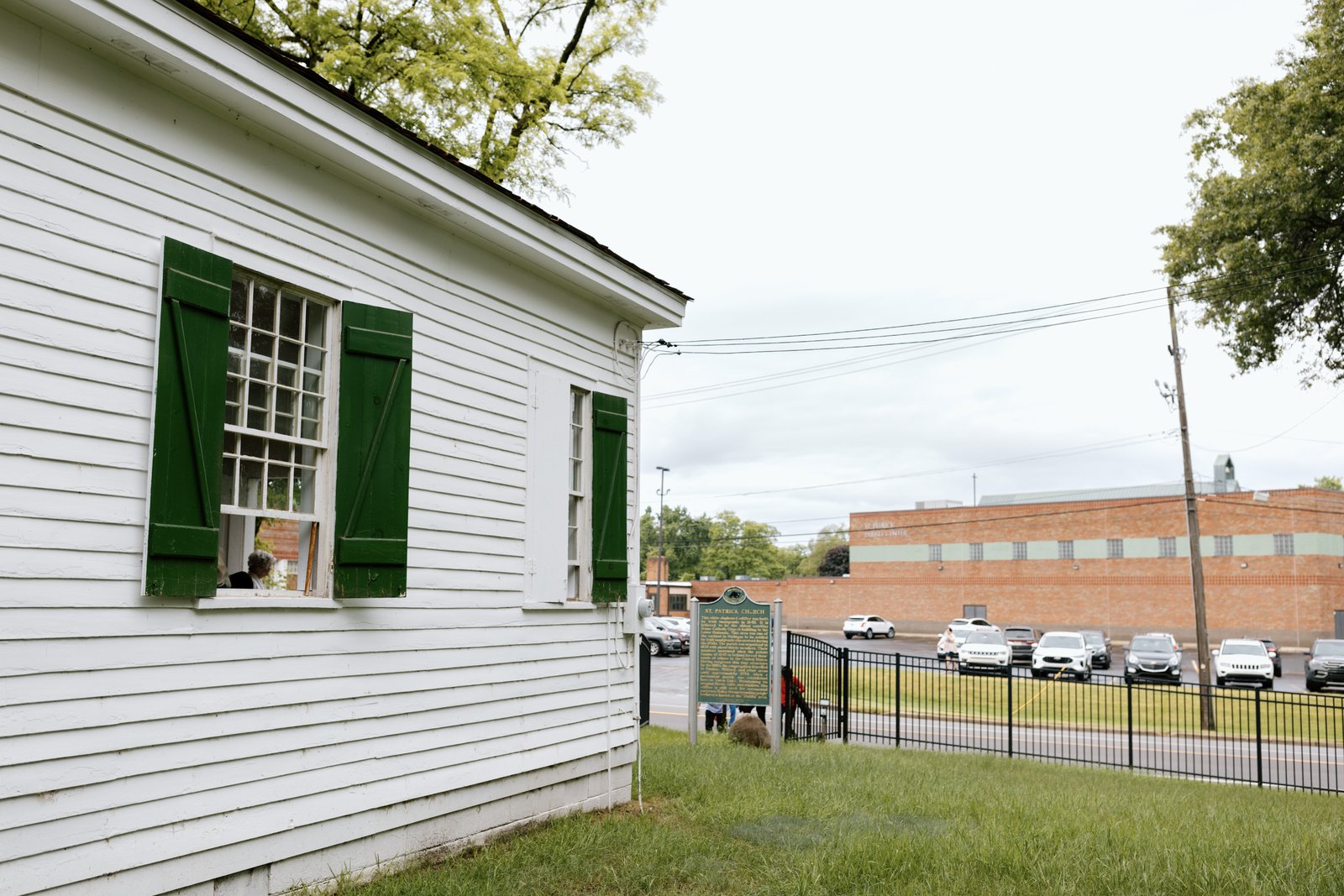
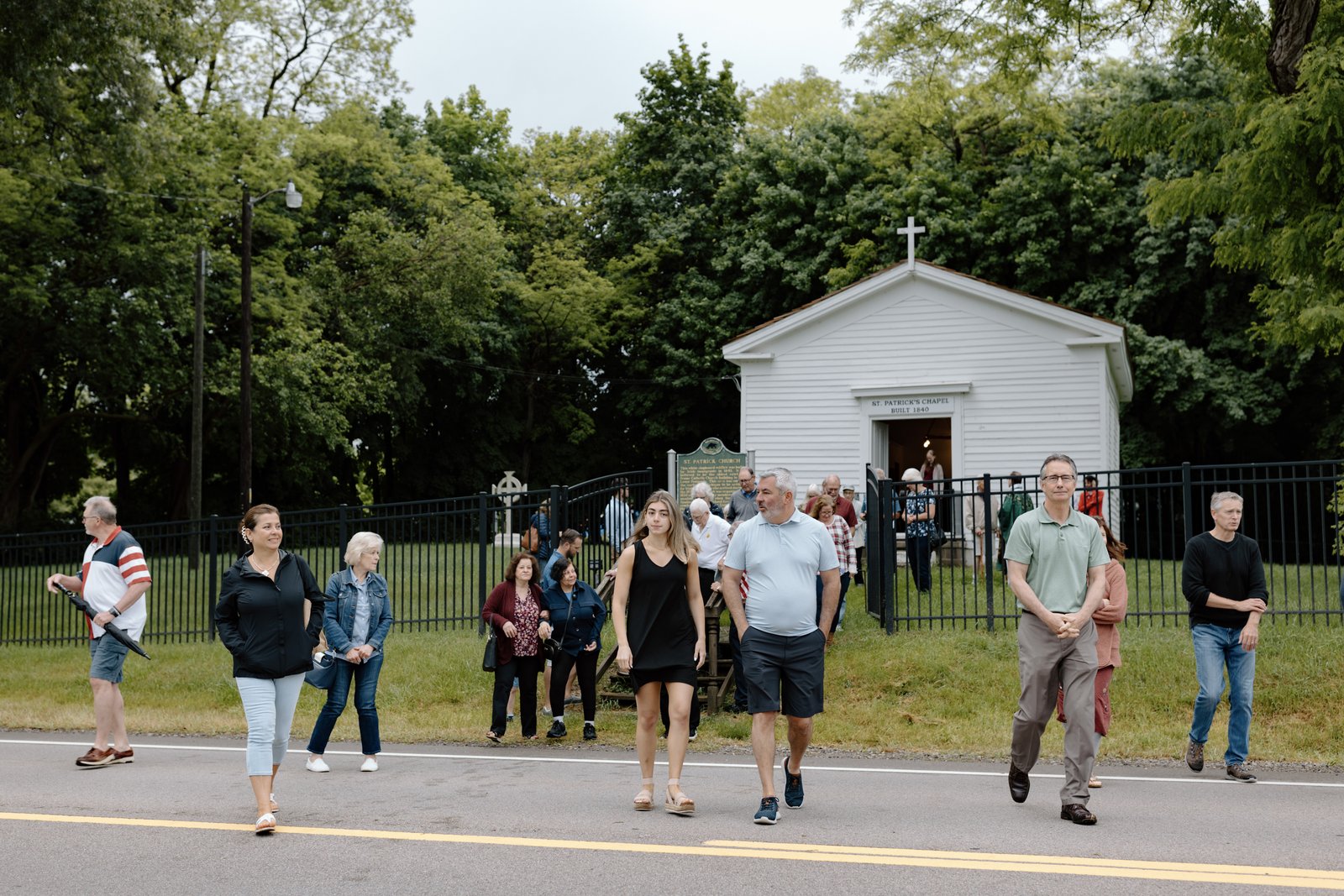
On Memorial Day, May 27, Fr. David Cybulski, moderator and priest in solidum at St. Patrick Parish, celebrated one of the parish's two annual Masses inside the chapel with a few dozen parishioners, and afterward blessed gravesites in the historic cemetery, which is across the street from the main parish church.
For those unable to make it to St. Patrick’s Memorial Day or Labor Day Masses, the parish allows people to tour the chapel by calling the parish office at (248) 698-3100.
Miller said Mass in the chapel is a chance to reflect on the grit and faith of the people who came before her, who out of devotion and determination, built a simple wooden church that has stood the test of time to celebrate a faith that’s timeless.
“I’m a product of Irish immigrants, so when I’m in the chapel, I think about the people who built this place,” Miller said. “In the prayers of the faithful, we always pray for the people who built the chapel. It gives you a sense of history, how farmers in the area made this place their community, and they put so much sweat and tears to build this with such great reverence.”
